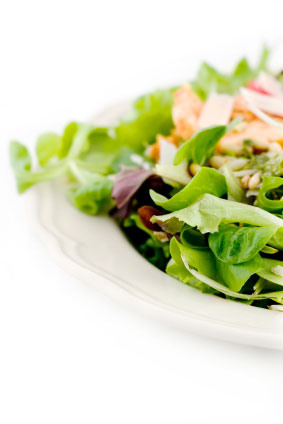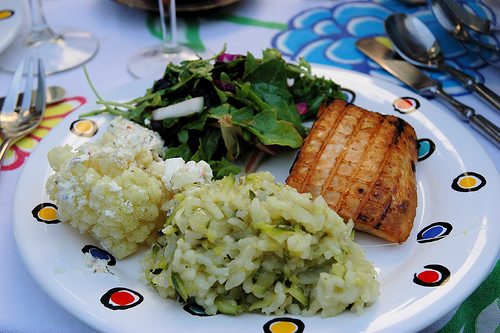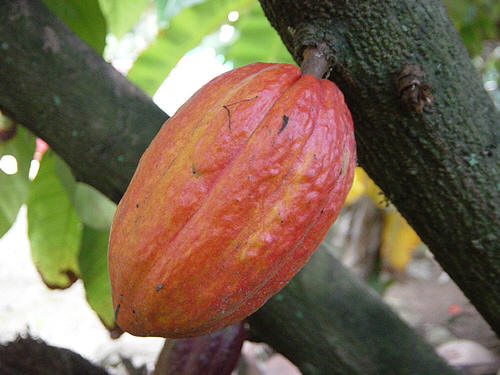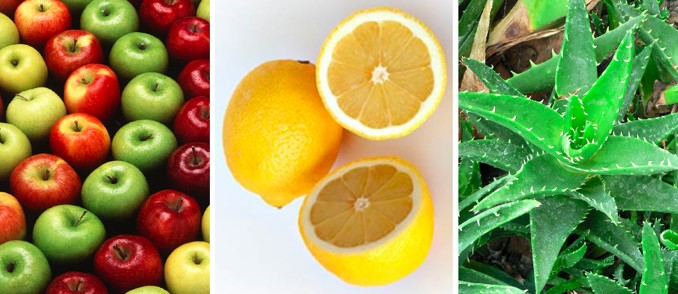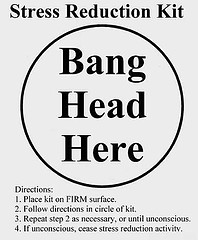There’s no need to ever ask vegan and vegetarians ‘where do you get your protein?’ because there are so many different ways to enjoy plant-based protein. Whether you’re a vegan, an omnivore, or choose to eat somewhere in between, there is a huge list of plant-based protein options to choose from.
It’s important to note that ALL plant-based foods have protein, even unlikely foods like oranges (almost 1 gram/orange) and kale (almost 3 grams/cup, chopped). So rather than detailing every single plant food on the planet, we’re going to cover traditionally dense protein sources like nuts, seeds, beans, lentils, grains, tofu/tempeh, and the like.
This post is built to be the definitive guide to plant-based protein options!
I’ve divided up the sections based on the individual foods, and included information on fresh, prepared, and other versions of each of the items.
For each, I’ve shared nutritional information from the USDA (United States Department of Agriculture) and corroborated that with product manufacturers. In each section, there are tips to adding these options into your diet in easy, practical ways with healthful recipes.
Note that I’m a blogger, not a doctor; for specific medical advice and nutritional needs, please see a qualified health care practitioner.
Let’s dive in!
Soy: The Little Bean With A Big Impact
Soy has gotten a bit of a bad reputation, but it’s most undeserved. Soybeans are a super healthful legume, and it comes in various forms for your eating pleasure. You can enjoy this wondrous bean fresh (as edamame), dried (for soups and stews), as tofu, soymilk, fermented into tempeh or miso; soy is also used as a protein supplement as soy protein powder.
When fresh or whole, soy is a true superfood. One cup of fresh edamame (usually served steamed, see recipes below) contains 8 grams of fat and 17 grams of protein. Tofu has 10 grams of protein per half cup and tempeh beats that considerably, with 31 grams per cup! Soymilk is another good source, coming in at 8 grams of protein per cup! To learn more about the nutritional benefits of soy protein and the link between reduced cancers, better kidney function, and other health issues, click here. Soy protein powder/supplements are also an option, but is generally not recommended. There are lots of other protein supplements that are superior.
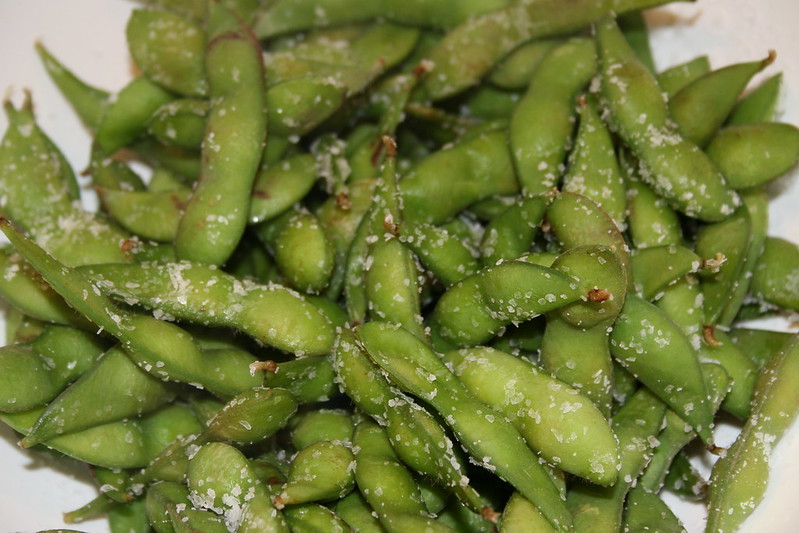
You may have heard that soy can be dangerous to your health, but it totally depends on what type of soy you are eating. Fresh foods made from soy are complete foods, and contain all the fat, fiber, and protein that makes the food complete, digestible, and bioavailable.
But when foods like soy are broken down into parts and extractions, then their nutritional benefits are negated. Soybean oil (soya oil), soy protein isolate, soy flour, and soy protein are examples of extractives that are generally to be avoided. These ingredients are often found in processed foods and fast foods, so if you’re cooking at home and eating a wholesome diet, you likely don’t need to worry about them.
Another issue of concern with soy is that most soy in the US is genetically modified. Most of this soy is used as animal feed, and used for processed foods. So again, if you’re cooking at home and using whole foods, likely the soy is organic and/or not genetically modified, but be sure to read the labels.

Soy Recipes
- Edamame Soup
- Sweet & Spicy Edamame
- Edamame & Hijiki Salad
- 20 Best Tofu Recipes
- Korean Tofu
- Tofu & Sausage Scramble
- 12 Tempeh Recipes
Hemp: Tiny Seeds full of Nutrition
Like soy, there are often misunderstandings about hemp. Hemp has proven to be an incredible crop: it’s good for soil, requires little inputs, can be used a building material, turned into clothing, made into biofuels, and we can eat it! And yet, because it’s related to marijuana, hemp has a negative reputation; in the United States, hemp is still considered a Schedule 1 substance, even though there is no psychoactive component in the plant.
Thankfully, hemp restrictions are loosening slightly around the US, and universities are able to obtain research permits to grow hemp crops. Canada’s hemp industry is lightyears ahead of us; as such, most hemp products we get in the US are from Canadian grown hemp. The main ways we enjoy hemp is in the form of hemp seeds, hemp protein powder, and hemp milk.
Hemp seeds are tiny, soft seeds that can be used in a variety of ways. I like to sprinkle on my salads, atop oatmeal or chia bowls, blended into sauces or smoothies, and added to trail mix or bars. Their soft texture makes them almost unnoticeable in most recipes, but there are lots of good reasons to add them. Hemp has a balanced ratio of omega oil 3, 6, and 9, and it’s high in protein: 10 grams for protein for just 3 Tablespoons of seeds.
Hemp protein powder has a deep green color and looks best in green or berry-colored smoothies. The protein powder has 15 grams of protein per 3 Tablespoons (30 grams). It also works really well in baked goods, as an additive to veggie burgers, and in bars, like my Hemp Protein Bars shown below.
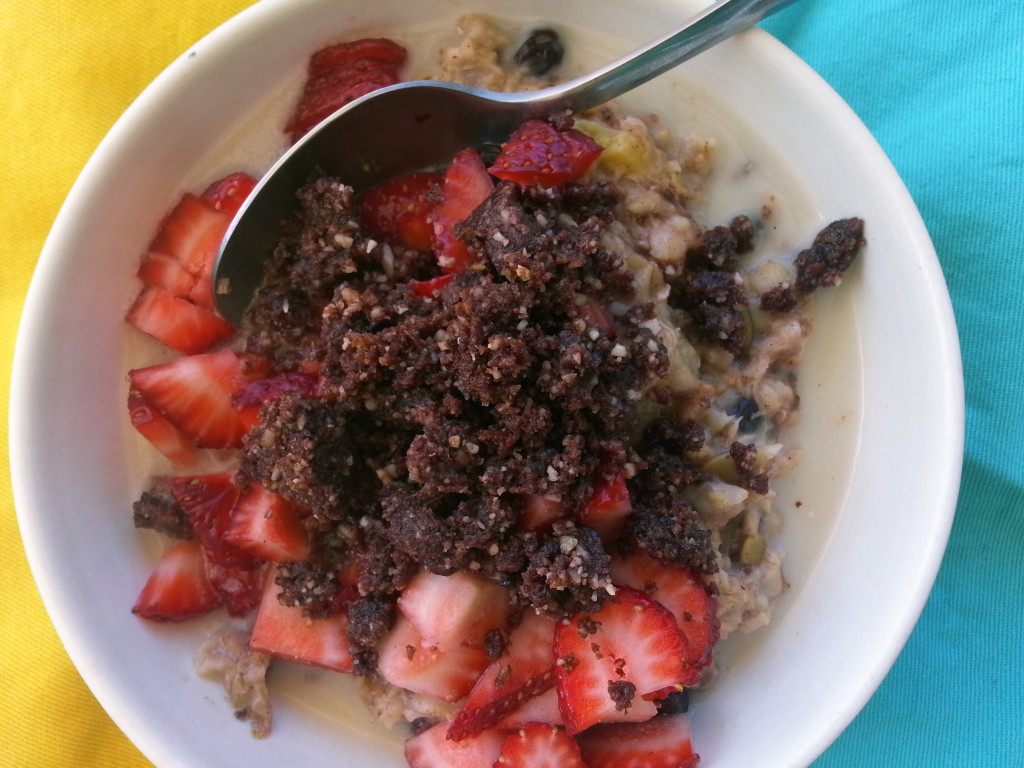
Hemp Recipes
Nuts: Easy High-Protein Snacks
Nuts (and seeds) are one of the ways I maintain a relatively high fat, high protein vegan diet. Seriously, forget what you know about nuts being ‘too high in fat–’ these foods are nutritional powerhouses. Nuts are my number one option for mid-morning or mid-afternoon hunger pangs, and I use them in a lot of my meals too. My current favorite is walnuts (because, Costco!), but pecans, brazil nuts, almonds and cashews are other excellent options that I incorporate into my meals and snacks; peanuts are technically a legume, so we’re going to include those separately below.

Nuts (and nut butters) are high in fat, yes. But these are healthy fats that are actually quite good for us; nuts are also really high in minerals and yes, PROTEIN. We’re looking at some awesome protein power here! The protein counts are awesome. Per 1 cup measure, walnuts have 15 grams, pecans have 9 grams, almonds have 30 grams, brazil nuts are 19 grams, and cashews are 20 grams.
Nut butters are even higher in protein, just due to the squishing and squashing of the nuts into creamy forms. Even one Tablespoon of nut butters offer a good dose of daily protein: almond butter is 3.4 grams, 2.8 grams for cashew, 2.5 grams for walnut, 2 grams for brazil nut, and about 2 grams for pecan butter. I don’t know about you, but 1 Tablespoon of nut butter doesn’t fill me up, so each time I dip into the jar, I’m likely getting about 5-10 grams of protein. My favorite after yoga/workout snack is a local banana or an apple with almond butter. Yum!
Interestingly though, nut milks don’t have a ton of protein in them. Almond and cashew milk, the most common milks available, usually have less than 1 gram of protein per serving. If you’re really counting your protein, choose a fortified milk or just ensure you’re getting it in other ways.
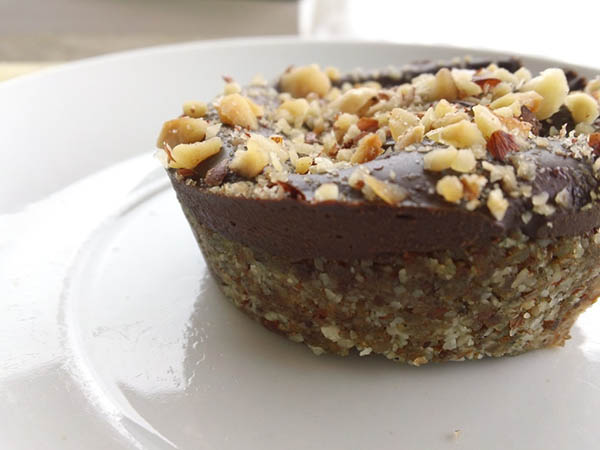
Nut Recipes
Peas: One of the Best Protein Sources on the Planet
I’m not exaggerating when I suggest that peas are really one of the best protein sources on the planet. I grew up eating peas in a can, so when I learned how much power these little legumes have, I was really blown away. Like soy, you can enjoy peas in various forms. One of the most delicate and delicious ways is enjoying fresh green peas in the spring, but you can also buy dried peas (split peas), and pea protein is being found in increasingly more products.

Whether you choose yellow or green, dried peas (the kind used for split pea soup and dal) have an amazing 48 grams of protein per cup of dried beans; when cooked the amount is 16 grams per 1 cup of peas. Fresh peas have about 9 grams per cup.
Pea protein is a protein supplement that’s become much more popular in the past few years. It’s also used as the base for lots of meat analogs (faux meat) products like Beyond Meat (where it’s mixed with soy), in high-protein snacks like SuperEats, and in drinks like Ripple. Pea protein can be used as a protein supplement and has 15 grams of protein per 2 ounces.
Dried & Fresh Pea Recipes
- Split Pea Soup to Make Grandma Proud
- Mac & Peas (vegan mac and cheese)
- Split Pea Hummus
Beans: The Magical Fruit
No, of course, beans are not actually fruit, but they might be magical! They are part of the legume family, which includes lentils, peas, and peanuts. And they are the superstar of the vegan protein world. You’ve heard it before: beans are cheap! Beans are easy to cook! Beans are endlessly versatile. And all of these things are true.
My favorites are adzuki beans, mung beans, black beans, cannellini beans, and chickpeas. I buy them all in the bulk food section of my natural food store, and keep at least a few varieties on hand at all times. I often have a can or two floating around for those days when I don’t have time to properly soak and cook the beans.
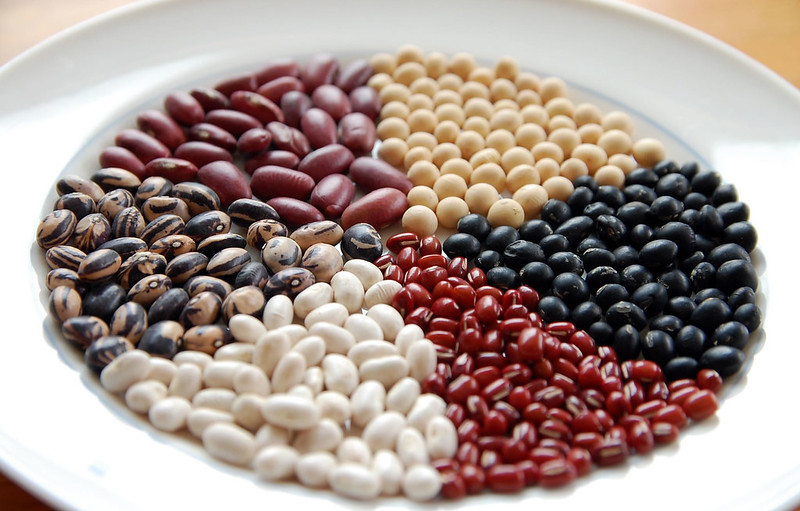
And that proper soaking and cooking is the key to enjoying beans, and not suffering digestive distress often associated with ‘the magical fruit.’ Beans (except lentils and mung beans) need to be soaked for at least 8 hours, and then cooked until totally soft. You can cook in an Insta-Pot, stovetop, or slow cooker, which is my preferred method because they cook up super soft and perfect every time. Properly cooked beans are soft to the touch, and almost creamy. Any bit of crunch of bite in the beans means they are not cooked well, and your tummy might suffer the consequences.
And the protein count for beans is so very good: black beans, cannellini beans, navy beans, kidney beans, and chickpeas are 15 grams/cup; pinto beans at 12 grams/cup mung beans are about 14 grams/cup, while adzukis come in at 17 grams/cup (all nutrition is for cooked beans). Nevermind all the iron and fiber and other good stuff they contain.
Another awesome way to enjoy beans is with bean-based noodles. I’ve seen noodles made from soy, adzuki, mung, and (my favorite, for the wild dark color) black bean noodles. These are gluten-free noodles that are packed with protein and are a nice alternative whether you’re eating gluten-free or not.
And if you like chickpeas, you can turn chickpea flour (besan flour) into an awesome chickpea flour bread called socca. I love this hearty flatbread with dips and sauces, served alongside a big salad. And finally, you can even turn chickpea flour into a tofu substitute, known as Burmese tofu.

Bean Recipes
- Southwest Baked Beans
- Adzuki Bean & Pumpkin Chili
- Big Batch Hummus and Caramelized Onion Hummus
- Three Bean Salad
- Socca (chickpea flour flatbread)
- Black Bean Noodles
- 20 Best Bean Recipes
Lentils: Lovely Little Legumes
If I had to pick a favorite legume, it would be lovely little lentils. Not only do they look like little red, brown, or green jewels, they are quick cooking and just feel so dang healthy! I eat lentils at least twice a week, made into big pots of lentil stew, curries, or made thicker and used in wraps or with polenta. Lentils are ready in a snap, can be made with a variety of flavorings (think Indian, Mexican, Moroccan flavor profiles), and they freeze well, so you can do some batch cooking and have lentils for days (weeks! months!).
One cup of cooked lentils has 18 grams of protein, and it’s totally easy to sit down for a bowl of lentil stew or soup and have it be more than 1 cup, so when you eat lentils you’re likely getting even more than 18 grams. And, lentils are super high in fiber (with 1 cup meeting about 60% of your daily need), along with being a most excellent source of molybdenum, folate, copper, phosphorus, and manganese.

Lentil Recipes
Peanuts: The Groundnut
That’s right, peanuts are not technically nuts, but are part of the legume family, just like our little lentil and bean friends. Another fun fact is that they grow as a small bush and the peanut pods actually grow underground. This awesome food has been feeding humans for centuries.
Peanuts are high in lots of vitamins and minerals, primarily copper, manganese, B3, folate, biotin, and molybdenum. And of course, they are awesome as a protein source. One cup of roasted peanuts has about 37 grams of protein, while 1 tablespoon of peanut butter has about 8 grams of protein, whether you choose chunky or smooth.
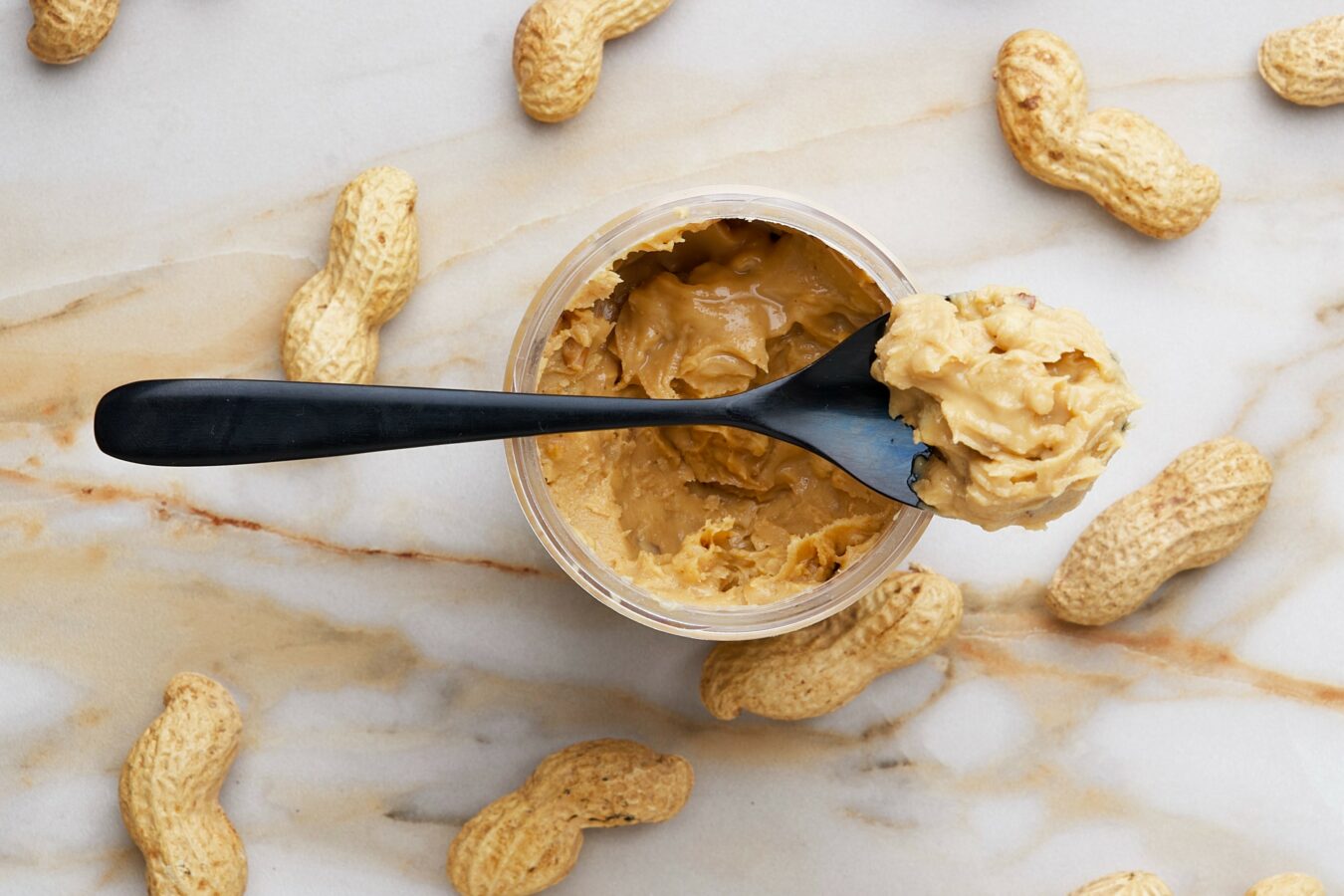
Peanut and Peanut Butter Recipes
- Peanut Butter Cookies
- Peanut Sauce (for Summer Rolls)
- Ethiopian Chickpea Stew
- Vegan Pad Thai Noodles
- Wasabi Peanuts
Seeds: More than Bird Food
Is there a day that goes by that I don’t eat seeds? I don’t think so! There are so many seeds to choose from, and since they are often more affordable than nuts, seeds are a mainstay of my high fat, high protein vegan diet.

I start my day with a big bowl of chia pudding (see recipe below), which I top with hempseeds (see above for more info) and often other nuts and goodies. But I also include various types of seeds in my trail mix, as toppings for my salads, baked into baked goods, stirred into stir-fry, or just eaten out of hand for a quick snack.
My particular favorites are sunflower seeds, pumpkin seeds, hempseeds, and chia seeds. The other seed I use a lot of is sesame, in the form of tahini. I use tahini in sauces and dressings, but also as a drizzle on salad, veggies, and more. It’s naturally bitter, so I like to pair it with something a little sweet (like lemon or apple cider vinegar). Flax seeds are another great seed that can be really healthful; I don’t use flax much any more, but it’s an awesome addition to granola, breads, salads, and more.
And yes, these tiny seeds are loaded with protein: 1 cup of sunflower seeds has about 29 grams of protein, 1 cup of pumpkin seeds is about 12 grams, 1 ounce of chia seeds has almost 5 grams of protein, 1 Tablespoon of flaxseeds has about 2 grams (different measurements are a factor of the USDA nutrition ratings, not my own measurement choice!). Seeds are also naturally high in healthy fats, along with being high in fiber and containing heaps of minerals.
